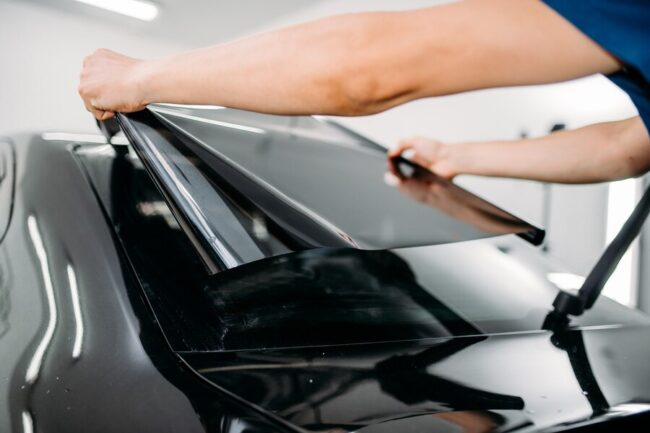The Rise Of Energy-Efficient Window Tint
In today’s era of sustainability and energy conservation, the demand for energy-efficient solutions is on the rise. One such innovative solution making waves in the architectural and automotive industries is energy-efficient window tint. This advanced window treatment not only enhances the aesthetic appeal of buildings and vehicles but also offers a plethora of benefits, ranging from reduced energy costs to improved comfort and environmental conservation.
Energy-efficient window tint works by utilizing cutting-edge technology to regulate the amount of heat and light that enters a space through windows. By blocking harmful UV rays and reducing solar heat gain, this tint helps maintain a comfortable indoor temperature, reducing the need for excessive heating or cooling. This, in turn, leads to lower energy consumption and decreased utility bills, making it a cost-effective investment in the long run.
Moreover, energy-efficient window tint contributes to environmental sustainability by reducing the carbon footprint of buildings and vehicles. By minimizing the use of air conditioning and heating systems, it helps reduce greenhouse gas emissions, contributing to a healthier planet for future generations.
In this blog post, we will delve deeper into the world of energy-efficient window tint, exploring its benefits, technological advancements, applications, and future trends. Join us on this journey as we uncover the transformative potential of energy-efficient window tint in creating more sustainable and energy-efficient spaces.
Understanding Energy-Efficient Window Tint
Understanding energy-efficient window tint is essential for homeowners and businesses looking to reduce their energy consumption and improve indoor comfort. Energy-efficient window tint is a thin, multi-layered film that is applied to the interior surface of windows. It works by blocking a significant portion of the sun’s heat and ultraviolet (UV) rays while still allowing visible light to pass through.
One of the key benefits of energy-efficient window tint is its ability to reduce the amount of heat that enters a building, especially during hot summer months. By blocking out a portion of the sun’s heat, energy-efficient window tint helps to keep interior spaces cooler, reducing the need for air conditioning and lowering energy costs. Additionally, by reducing the amount of heat entering a building, energy-efficient window tint can also help to extend the life of furniture, flooring, and other interior furnishings by reducing fading and sun damage.
Another important benefit of energy-efficient window tint is its ability to block UV rays. UV rays can cause skin damage and contribute to the fading of interior furnishings. By blocking UV rays, energy-efficient window tint helps to protect occupants from harmful UV radiation and extends the life of interior furnishings.
Overall, understanding energy-efficient window tint is crucial for those looking to improve the energy efficiency and comfort of their buildings. By blocking heat and UV rays, energy-efficient window tint can help to reduce energy costs, improve indoor comfort, and protect interior furnishings.
Environmental Impact
The environmental impact of energy-efficient window tint is significant and multifaceted. By reducing the amount of heat that enters a building, energy-efficient window tint helps to lower the need for air conditioning, which in turn reduces electricity consumption and greenhouse gas emissions. This reduction in energy consumption not only lowers utility bills for homeowners and businesses but also helps to mitigate the environmental impact of energy production.
Additionally, energy-efficient window tint can help to reduce the urban heat island effect in densely populated areas. The urban heat island effect occurs when urban areas experience higher temperatures than surrounding rural areas due to the concentration of buildings and pavement, which absorb and retain heat. By reducing the amount of heat that enters buildings, energy-efficient window tint can help to lower indoor temperatures and mitigate the urban heat island effect.
Furthermore, energy-efficient window tint can help to reduce the demand for new construction of energy-intensive buildings. By improving the energy efficiency of existing buildings, energy-efficient window tint can help to extend the life of these structures and reduce the need for new construction, which can have a significant environmental impact in terms of resource extraction, manufacturing, and transportation.
Overall, the environmental impact of energy-efficient window tint is substantial, with benefits ranging from reduced energy consumption and greenhouse gas emissions to mitigation of the urban heat island effect and reduced demand for new construction.
 Technological Advancements
Technological Advancements
Technological advancements in energy-efficient window tint have revolutionized the industry, offering consumers a range of innovative options to improve their buildings’ energy efficiency and comfort. Here are some key advancements:
- Nano-Ceramic Technology: This technology involves the use of nano-sized ceramic particles in the window tint film. These particles can selectively block out infrared radiation while allowing visible light to pass through, improving heat rejection without significantly darkening the window.
- Low-E Coatings: Low-emissivity (Low-E) coatings are thin, metallic layers applied to the window tint film. These coatings help to reflect heat back into the room during the winter months, reducing heating costs.
- Smart Tinting: Smart tinting technology allows the tint to automatically adjust its level of tint based on external conditions. This can help optimize heat and light transmission throughout the day, maximizing energy efficiency.
- Multi-Layered Films: Modern energy-efficient window tint often consists of multiple layers, each serving a specific purpose such as UV protection, heat rejection, and glare reduction. These films are designed to provide maximum performance while maintaining optical clarity.
- Sputtered Films: Sputtering is a process where metal or metal oxide coatings are deposited onto the window tint film. These films offer superior heat rejection and UV protection compared to traditional dyed films.
- Improved Durability and Longevity: Advancements in materials and manufacturing processes have led to energy-efficient window tint films that are more durable and longer-lasting, reducing the need for frequent replacements.
These technological advancements have made energy-efficient window tint a highly effective and attractive option for improving the energy efficiency and comfort of buildings.
Installation Process
- Preparation: The window glass is thoroughly cleaned to remove any dirt, dust, or debris. This ensures that the tint adheres properly to the glass.
- Measurement and Cutting: The window tint film is measured and cut to the appropriate size for each window. It is important to cut the film slightly larger than the window to allow for proper coverage.
- Application Solution: A soapy solution is applied to the window glass to act as a lubricant for the tint film. This allows the film to be positioned and adjusted before it is fully adhered.
- Application of the Tint Film: The tint film is carefully applied to the window glass, starting from the top and working downwards. The film is gently smoothed out to remove any air bubbles or creases.
- Trimming: Once the film is in place, it is trimmed to fit the exact dimensions of the window. Excess film is removed, leaving a clean edge.
- Squeegee: A squeegee is used to press out any remaining air bubbles and ensure the film is firmly adhered to the glass.
- Drying: The window tint film needs time to dry and adhere properly to the glass. This process can take anywhere from a few days to a week, depending on the type of film and environmental conditions.
- Final Inspection: Once the tint film is fully dry, a final inspection is conducted to ensure that it has been properly applied and there are no visible defects or air bubbles.
Future Trends
- Smart Tint Technology: Advancements in smart tint technology may allow window tint to adapt to changing light conditions automatically. This could help maximize energy savings by optimizing the amount of light and heat entering a building.
- Improved Energy Efficiency: Continued research and development are expected to lead to even more energy-efficient window tint solutions. This could include films with higher solar heat rejection capabilities or improved insulation properties.
- Enhanced Durability: Future window tint products are likely to be more durable, with longer lifespans and better resistance to scratching, fading, and discoloration. This would ensure that the energy-efficient properties of the tint remain effective over time.
- Increased Sustainability: As environmental concerns grow, there is a trend towards more sustainable building materials. Future energy-efficient window tint products may be made from eco-friendly materials or be designed to be easily recyclable.
- Integration with Smart Building Systems: Energy-efficient window tint may become more integrated with smart building systems, allowing for better control and optimization of energy usage based on factors such as occupancy, time of day, and weather conditions.
- Regulatory Changes: Changes in building codes and regulations may drive the adoption of energy-efficient window tint. Governments and organizations are increasingly focused on reducing energy consumption and carbon emissions, which could lead to more stringent requirements for energy-efficient building materials.
In conclusion, the rise of energy-efficient window tint represents a significant advancement in the quest for more sustainable and energy-efficient buildings. By understanding the benefits of energy-efficient window tint, including reduced energy costs, improved indoor comfort, and protection of interior furnishings, homeowners and businesses can make informed decisions to enhance their buildings.
Looking ahead, future trends in energy-efficient window tint are expected to focus on further enhancing performance, durability, and sustainability. Advancements in smart tint technology, improved energy efficiency, enhanced durability, increased sustainability, integration with smart building systems, and regulatory changes are all likely to shape the future of energy-efficient window tint.
As we move towards a more sustainable future, energy-efficient window tint is set to play a crucial role in reducing energy consumption and carbon emissions. By investing in energy-efficient window tint, individuals and businesses can contribute to a greener planet while enjoying the benefits of lower energy costs and improved indoor comfort.
Take the next step towards a more energy-efficient future by considering energy-efficient window tint for your home or business. Contact a professional window tinting service provider to learn more about how energy-efficient window tint can benefit your building and help you save on energy costs. Together, we can create a more sustainable future for generations to come.




